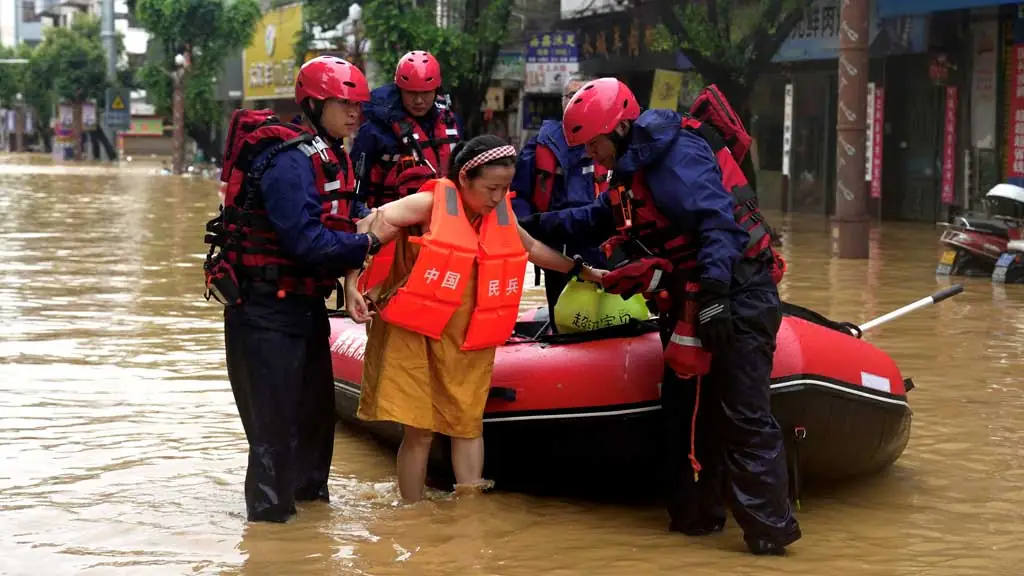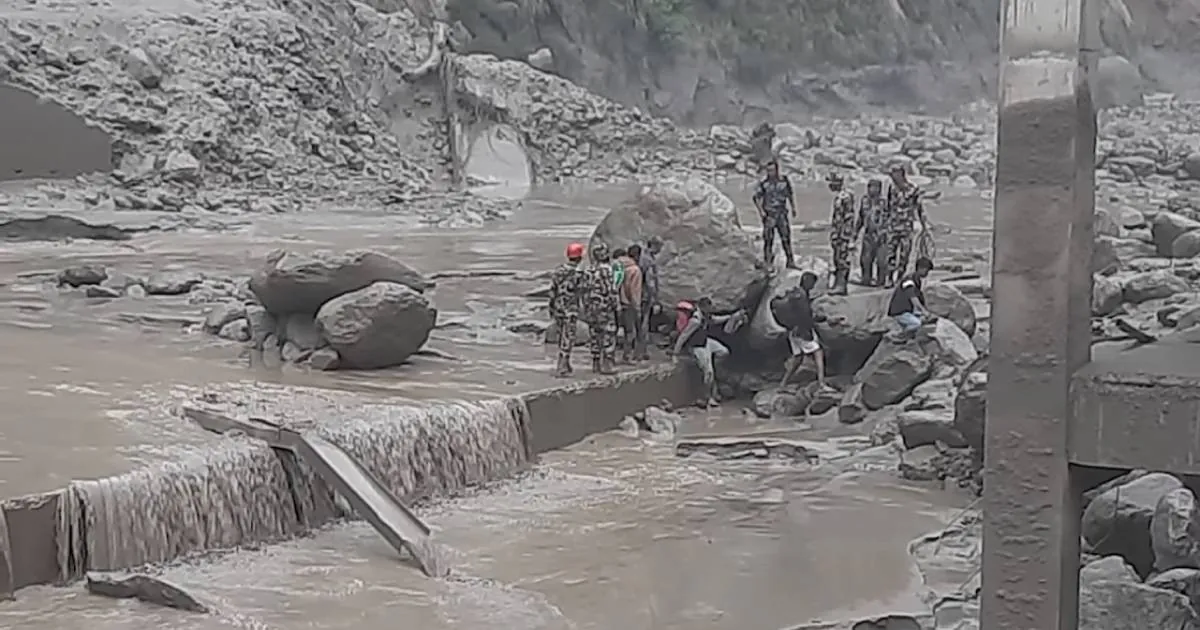A wave of devastating floods has swept through the remote and mountainous regions along the Nepal-China border, leaving dozens missing and entire communities grappling with the aftermath. Triggered by relentless monsoon rains over the past several days, the floods have unleashed torrents of water that “washed away homes, roads, and bridges,” plunging the area into chaos and isolation.
The disaster struck with little warning as rivers swollen by “unprecedented rainfall” burst their banks, inundating villages and farmlands that lie in the narrow valleys between towering peaks.
Local authorities have reported that at least 30 people are currently unaccounted for, though the number could rise as rescue teams continue their search amid difficult terrain and worsening weather conditions.
Rescue Efforts and Local Response

Emergency responders are battling “treacherous conditions” to reach the hardest-hit areas. Landslides triggered by the heavy rains have blocked many access routes, making it nearly impossible for ground teams to reach some villages.
Communication lines have been severed, leaving families cut off from the outside world and heightening fears for their safety. Helicopters have been deployed to conduct aerial surveys and deliver essential supplies, but the scale of the disaster has overwhelmed local resources.
Eyewitnesses describe scenes of “chaos and heartbreak,” with families desperately searching through mud and debris for loved ones.
One survivor recounted the terrifying moments when the floodwaters surged: “The river rose so quickly, we barely had time to escape. Everything we owned is gone.”
This sentiment echoes across the affected communities, many of whom have lost not only their homes but also their livelihoods.
Regional Impact and Ongoing Risks

The floods have also had a significant impact on regional connectivity and trade. The border area between Nepal and China, usually a vital corridor for commerce and travel, has been severely disrupted.
Authorities warn that continued rainfall could trigger further landslides and flooding, posing ongoing threats to both “life and infrastructure.” Efforts are underway to restore critical routes, but the damage is extensive and will require substantial rebuilding.
Call for Aid and Community Solidarity
In response to the crisis, local governments have called for urgent international assistance. Relief agencies are mobilizing to provide food, clean water, medical supplies, and temporary shelter to displaced families.
Volunteers from neighboring communities have also stepped forward, demonstrating resilience and solidarity in the face of adversity.
Quote of the Day
“In the midst of every crisis lies great opportunity — to rebuild stronger, to unite, and to heal.”
As rescue operations intensify, the world watches with hope that those missing will be found safe and that the affected communities will receive the support they need to recover. The disaster serves as a stark reminder of the “unpredictable fury of nature” and highlights the urgent need for improved disaster preparedness and resilient infrastructure in vulnerable mountainous regions.
